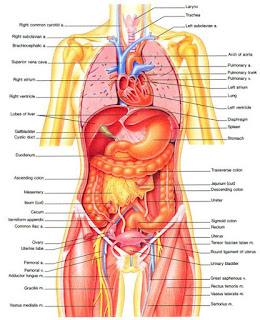Week 9: Space + Art
This
week's lecture was beyond the Earth: the Space. Like Professor Vesna
said, this week's topic is a culmination of all the topics we have covered up
to this point because space is so vast and incorporates a number of different
subtopics within it (Vesna). I especially enjoyed learning about the
history of space, specifically things like the atomic bomb, the Cold War, the
Space Race, Star Wars!
“THE ART OF NEGATIVE SPACE.” Tang Yau Hoong, tangyauhoong.com/portfolio/the-art-of-negative-space/.
"Curiosity (rover)." Wikipedia. Wikimedia Foundation, n.d. Web. 31 May 2018. <http://en.wikipedia.org/wiki/Curiosity_ (rover)>.
 |
| THE ART OF NEGATIVE SPACE |
In this week's lecture Professor
Vesna talked about the Space Race, and to me this is an incredibly important
period in American history. Because of the Space Race and the Cold War, the
United States has asserted its superpower status in the world after knocking
off the rival that was the USSR. Between Sputnik, the Apollo missions,
and many other advances, the US and the USSR both put large sums of money into
the Space Race. Many argue that this was a waste of money, but because of
this exploration we made many advances in modern technology. Some of
these items include Satellite TV, Laptops, the Dust buster, smoke-carbon
monoxide detectors, telemedicine, the joystick, 3d graphics and virtual
reality, non-reflective displays, ear thermometers, and satellite navigation.
 |
| Space Race |
An
example of space and art coming together is the Star Wars series, which is a
major part of pop culture. This famous series has generated millions of dollars
and has transported audiences for years to a galaxy far, far away.
Throughout the series there are a number of characters and creatures that
were inspired by wildlife on our planet. Now, Star Wars has gained so
much popularity and influence that modern scientists have been naming new
species of animals after Star Wars. Some of these species include Han
Solo, Tetramorium jedi and Yoda purpurata.
 |
| Star Wars |
NASA
is a huge organization in space intelligence. July 20, 1969 Neil Armstrong
stepped foot on the moon and planted an American flag, forever changing education
and human imagination. The work NASA has done and is working on involves both
saving money and supporting more equipment and weight for a future trip back to
the moon (Moskowitz). Currently there are robots and machines in space taking
photos, such as the photo here of the Curiosity Rover on Mars. This robot
landed on Mars August 2012 (NASA). It is studying, “the Martian climate and
geology; assessment of whether the selected field site inside Gale Crater has
ever offered environmental conditions favorable for microbial life, including
investigation of the role of water; and planetary habitability studies in preparation
for future human exploration” ("Curiosity (rover)"). The US has
collected amazing images form this excursion as well as more insight on outer
space and the life outside our own small realm called planet earth.
Work Cited
“THE ART OF NEGATIVE SPACE.” Tang Yau Hoong, tangyauhoong.com/portfolio/the-art-of-negative-space/.
"Curiosity (rover)." Wikipedia. Wikimedia Foundation, n.d. Web. 31 May 2018. <http://en.wikipedia.org/wiki/Curiosity_ (rover)>.
Dick,
Stephen J. "50 Years of NASA History." NASA.gov. NASA, 10
Apr. 2008. Web. 31 May 2018.
<http://www.nasa.gov/50th/50th_magazine/historyLetter.html>.
Dockterman, Eliana, et al. “Star Wars: The 40 Best Moments.” Time, Time, 23 May 2017, time.com/4788422/best-star-wars-moments/.
Independent, The. “The Space Race.” World Population Prospects: The 2017 Revision | Theindependentbd.com, www.theindependentbd.com/arcprint/details/134510/2018-01-27.
Dockterman, Eliana, et al. “Star Wars: The 40 Best Moments.” Time, Time, 23 May 2017, time.com/4788422/best-star-wars-moments/.
Independent, The. “The Space Race.” World Population Prospects: The 2017 Revision | Theindependentbd.com, www.theindependentbd.com/arcprint/details/134510/2018-01-27.
Jens,
Kevin Beent. "A Fish Called Greedo: 10 Species Named After Star
Wars." StarWars.com. N.p., 01 Apr. 2015. Web. 30 May 2015. <http://www.starwars.com/news/a-fish-called-greedo-10-species-named-after-star-wars>.
Moskowitz,
Clara. Staff Writer. "40 Years After Moon Landing: Why Is It So Hard to Go
Back? | Space.com." N.p., n.d. Web. 31 May 2018. <http://www.space.com/7015-40-years-moon-landing-hard.html>.
NASA.
NASA, n.d. Web. 26 May 2015.
<http://www.nasa.gov/mission_pages/msl/index.html>.
"The
Space Race." History.com. A&E Television Networks,
n.d. Web. 31 May 2018. <http://www.history.com/topics/space-race>.
Vesna,
Victoria. "8 Space Pt2 1280x720." YouTube. YouTube, 29 July 2013.
Web. 31 May 2018. <https://www.youtube.com/watch?v=hLZMDpoP-u0>.



Space and art work closely in hand. As you have written, NASA is a good example of this combination. Not only do they excel at creating robots and rockets for space exploration but also their media, such as facebook posts, their apps and events, incorporate various aspects of art to deliver the importance and meaning of the missions.
답글삭제